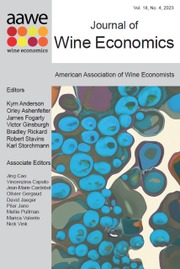If you are seeking a comprehensive guide to China's emerging wine terroirs—complete with detailed producer profiles, viticultural practices, and technical tasting notes—this may not be the book for you. However, if your interests lie in the complex sociocultural and historical forces that have shaped viticulture in the Tibetan region of China, particularly through the intersections of Catholic colonial missions, Tibetan traditions, and shifting political landscapes, then this work may offer significant value.
The term “Shangri-La” originated in British author James Hilton's 1933 novel Lost Horizon, but it was not until 2001 that the Chinese government officially renamed a city in the Tibetan region Shangri-La, a move intended to promote tourism. Following the opening of the area to foreign investment in 2008, capital began flowing into various sectors, including viticulture. Modern winemaking in Shangri-La, however, dates back to the 19th century, introduced by French and Swiss Catholic missionaries who required grapes to produce sacramental wine. While the history of colonialism in Asia—indeed, globally—is complex and difficult, it is likely that without the presence of these missionary efforts, a substantive wine industry would not have taken root in the region. That said, there is some evidence suggesting that grape cultivation in the area predates even these influences, with records indicating viticultural activity as early as 1374.
Traditionally, wine has not been a staple of Tibetan alcoholic culture, and the Chinese are historically more associated with beer and baijiu. Among Tibetans, the most enduring alcoholic beverage is chang, a barley beer that archaeological findings suggest has been brewed in the region since at least 2500 BC. Today, much of the barley once used for beer is diverted toward the distillation of qiang, a local spirit. Still, there are signs of innovation: microbreweries, such as Shangri-La Beer Farmhouse, are experimenting with small-batch production and cask-finishing techniques, including the use of barrels sourced from Moët.
A unique element of Tibetan viticultural identity is Rose Honey wine, a beverage reputedly introduced by French or Swiss missionaries and associated with churchyards. Often marketed as “organic” or “household made,” these wines are thought to possess a distinctive village terroir. But tourists should be wary, because much of what is sold under this label lacks certification from Deqin County, and the Rose Honey grape is not a vitis vinifera variety.
The Shangri-La Wine Company once held a monopoly on household grape purchases, often compensating growers below sustainable levels. This dynamic introduces a recurring theme in the book: the tension between production volume and quality under socialist economic systems. LVMH arrived in 2012, producing sparkling wine under the Chandon name. A significant milestone was LVMH's 2014 launch of the Ao Yun brand in Ningxia at a premium price point of $300 per bottle, bringing with it new standards for quality, labor compensation, and environmental practices. Ao Yun, meaning “Proud Cloud,” is now considered by some to be on par with similarly priced wines from Napa Valley.
Moët's approach contrasts sharply with that of the Shangri-La winery. Notably, Moët guarantees household incomes, and practices largely organic viticulture, while its local competitor adheres to conventional growing methods. Unsurprisingly, local growers have expressed a strong preference for Moët's compensation model. The author devotes a portion of the book to these socioeconomic dynamics, although a deeper exploration of Ao Yun—arguably one of China's flagship wines—would have been a welcome addition.
Many local farmers exclusively grow grapes now, while previously relying on more diverse sources of income. Galipeau claims that farmers are extremely happy with land lease agreements negotiated with Moët's vineyards, with many apparently saying it is the best income they have ever had. One of the ways farmers used to supplement their income was foraging for caterpillar fungus. The book allocates several pages to the description and collection methods of caterpillar fungus. It is part of Tibetan traditional culture as medicine and aphrodisiac. Many people still derive income from foraging and selling it for significant profits.
While I approached the book hoping for more detailed discussions of specific producers, winemaking styles, and terroir—elements suggested by the book's title—I nonetheless found it a compelling read from a sociological and cultural perspective. I tried Ao Yun several years ago, and one of the reasons I read this book was to learn more about these wines, which are, in my judgment, incredible. Despite my desire for more wine content, the book remains thoughtful, well-researched, and engaging. It offers an important, if underexplored, perspective on an emerging wine region at the crossroads of tradition, modernization, and global capital.

